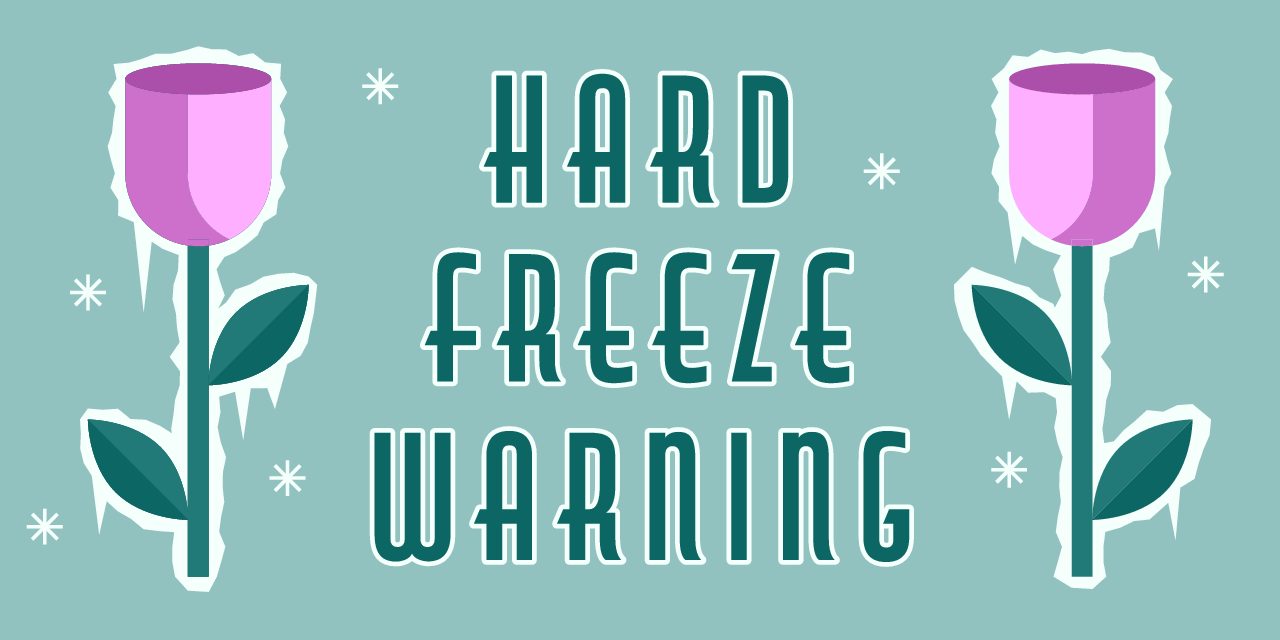First ‘hard freeze’ warning of the season comes early
On Sept. 20, a “hard freeze” warning was issued for various areas in Utah, including Cache Valley.
This means that temperatures were expected to drop below the freezing point. In this case, it was predicted to drop to 20 to 30 degrees Fahrenheit.
At this point in the semester, Lance Stott’s horticulture students usually have several more weeks to get plenty of hands-on, out-of-the-classroom experience. But when the hard freeze warning was issued, Stott was one of many people at Utah State University who had to consider a change in plans.
“In my herbaceous plant class we look at all the bedding plants and perennials all around campus,” Stott said. “And some of those are really sensitive to frost. So even if we get the lightest frost, they either die or go dormant.”
Stott worried he might have to make new plans for his students. “The other night I was really sweating it,” he said. “I was hoping it really wasn’t going to freeze because we normally still have probably two or three weeks’ worth of species we are able to look at outside.”
The frost didn’t materialize, but the early warning may portend cold days to come. Hard freeze warnings are usually sent out when forecasters predict temperatures to go below 28 degrees Fahrenheit.
“Plants have varying sensitivity to damage by cold temperatures,” said Larry Hipps, a professor of meteorology at Utah State University. “Some plants can withstand reaching temperatures well below freezing —say mid-to upper-20s —while others are damaged at just below 32 Fahrenheit.”
Hipps explained that while a freeze warning indicates that sensitive plants are in danger, a hard freeze warning indicates that damage or death is likely for most plants.
Jon Meyer, a climatologist at USU, added these hard freezes are normal in transitional months, and farmers and gardeners watch for these warnings to take necessary precautions.
Usually though, hard freezes come much later in the season. Records from the National Climatic Data Center indicate that, over the past 30 years, the earliest Logan area temperatures reached 28 degrees in the fall was Oct. 10, 2008.
The freeze warning came as forecasters identified an upper-level trough —a low-pressure center that typically comes with stormy weather and colder air —that was over Nevada and approaching Utah on Sunday. “We expected to have a cold night,” said Yoshimitsu Chikamoto, an assistant professor of climate at USU.
Although the hard freeze didn’t come, Chikamoto said, “the recent freeze alert is an excellent indicator to start preparing for winter.”
The warning didn’t just impact Stott’s class. Cache Junction Farm —a USU research farm where crops for both humans and university livestock are grown —also faced challenges due to the warning.Farm manager, Devin Hillyard, said employees had to drain all the irrigation lines and put temperature-sensitive equipment in heated buildings to protect the farm’s crops.
Frost-damaged plants can cause digestive issues in the animals that eat those crops, said Grant Cardon, a USU soil scientist.
Stott is still worried that this warning might mean an early freeze could be on the horizon. That would make it difficult for students to learn how to identify plants outside of the classroom.
“My students have a really hard time with the class when this happens,” Stott said, “because they do a whole lot better when we can go outside and look at actual specimens, instead of me showing them Google images.”
Stott hopes to see no more of these warnings for at least the next two weeks and is confident his class will be all right for at least the next 10 days.“The weather can always change,” he said.
Clarissa.Casper@usu.edu

